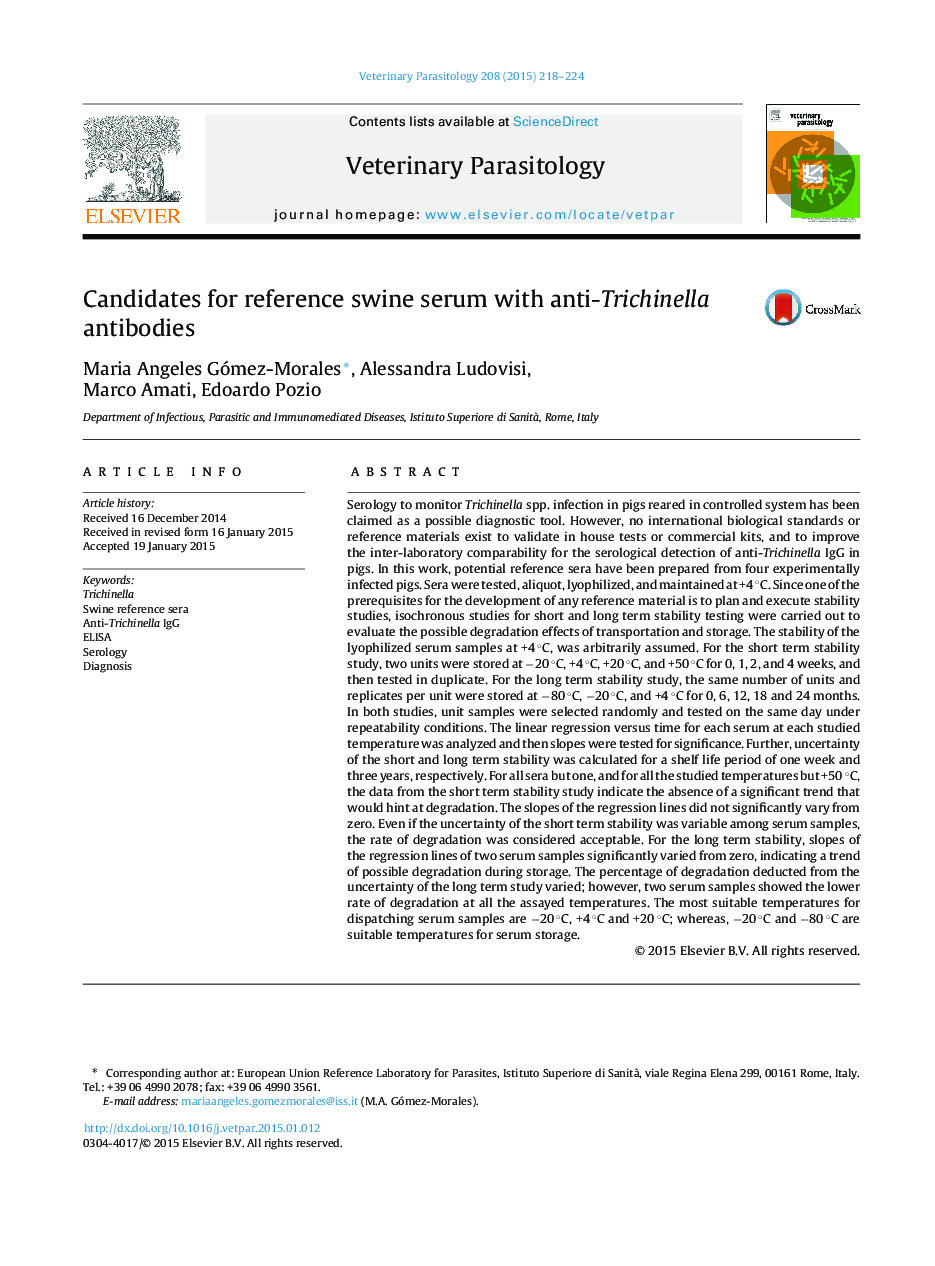| کد مقاله | کد نشریه | سال انتشار | مقاله انگلیسی | نسخه تمام متن |
|---|---|---|---|---|
| 5802527 | 1555674 | 2015 | 7 صفحه PDF | دانلود رایگان |
- No international biological standards or reference materials exist in parasitology.
- Serological tests to detect Trichinella infection in swine need harmonization.
- Candidate reference sera should be tested for short and long term stability.
- The use of reference sera improves the inter-laboratory comparability.
Serology to monitor Trichinella spp. infection in pigs reared in controlled system has been claimed as a possible diagnostic tool. However, no international biological standards or reference materials exist to validate in house tests or commercial kits, and to improve the inter-laboratory comparability for the serological detection of anti-Trichinella IgG in pigs. In this work, potential reference sera have been prepared from four experimentally infected pigs. Sera were tested, aliquot, lyophilized, and maintained at +4 °C. Since one of the prerequisites for the development of any reference material is to plan and execute stability studies, isochronous studies for short and long term stability testing were carried out to evaluate the possible degradation effects of transportation and storage. The stability of the lyophilized serum samples at +4 °C, was arbitrarily assumed. For the short term stability study, two units were stored at â20 °C, +4 °C, +20 °C, and +50 °C for 0, 1, 2, and 4 weeks, and then tested in duplicate. For the long term stability study, the same number of units and replicates per unit were stored at â80 °C, â20 °C, and +4 °C for 0, 6, 12, 18 and 24 months. In both studies, unit samples were selected randomly and tested on the same day under repeatability conditions. The linear regression versus time for each serum at each studied temperature was analyzed and then slopes were tested for significance. Further, uncertainty of the short and long term stability was calculated for a shelf life period of one week and three years, respectively. For all sera but one, and for all the studied temperatures but +50 °C, the data from the short term stability study indicate the absence of a significant trend that would hint at degradation. The slopes of the regression lines did not significantly vary from zero. Even if the uncertainty of the short term stability was variable among serum samples, the rate of degradation was considered acceptable. For the long term stability, slopes of the regression lines of two serum samples significantly varied from zero, indicating a trend of possible degradation during storage. The percentage of degradation deducted from the uncertainty of the long term study varied; however, two serum samples showed the lower rate of degradation at all the assayed temperatures. The most suitable temperatures for dispatching serum samples are â20 °C, +4 °C and +20 °C; whereas, â20 °C and â80 °C are suitable temperatures for serum storage.
Journal: Veterinary Parasitology - Volume 208, Issues 3â4, 15 March 2015, Pages 218-224
